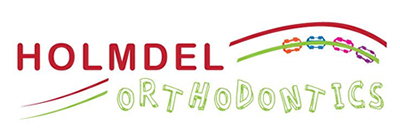Orthodontists Middletown NJ

Braces are the most common fixed appliances used to correct teeth. Braces consist of bands, wires and/or brackets. Bands are fixed around the teeth or tooth and used as anchors for the appliance, while brackets are most often bonded to the front of the tooth. Arch wires are passed through the brackets and attached to the bands. Tightening the arch wire puts tension on the teeth, gradually moving them to their proper position. Braces are usually adjusted monthly to bring about the desired results, which may be achieved within a few months to a few years.
Gone are the days when a metal band with a bracket was placed around each tooth. You can now choose clear or metal brackets and, in some cases, the color of your appliance. Wires are far less noticeable, and the latest materials are designed to move teeth faster with more comfort. Today, any age is a great age to wear braces! Today’s braces are also smaller, lighter and show far less metal than in the past. They come in bright colors for kids as well as clear styles preferred by many adults.
How Does Orthodontic Treatment Work?
Many different types of appliances, both fixed and removable, are used to help move teeth, retrain muscles and affect the growth of the jaws. These appliances work by placing gentle pressure on the teeth and jaws. The severity of your problem will determine which orthodontic approach is likely to be the most effective.
Duration of Treatment
Treatment time varies and can last between one and three years, depending on several factors including age, treatment method, and how minor or severe your case is. A big factor in a successful treatment is you! The more involved and diligent you are, the more efficient your treatment will be. For children, receiving interceptive or early treatment can also help provide better results.
Before beginning your orthodontic care, we will discuss all of your options and provide an estimate for how long your full treatment may take. Generally estimated and actual treatment times are fairly similar. However lack of compliance with keeping appointments, elastic wear or excess breakage can considerably lengthen your treatment time. Rarely there are unforeseen complications such as habits, periodontal or other dental issues or unanticipated growth can prolong treatment time. Anytime during the treatment we are happy to keep you posted on your progress!
Children Braces
Phase Treatment —This is a type of treatment where orthodontic correction is completed in 2 phases, called Phase I and Phase II. This option is for children who have not yet lost all of their primary (baby) teeth, but need to start orthodontic treatment. It is a very efficient way to treat very complicated cases early. It can be considered early intervention and preventative treatment for a few reasons.
Adult Braces
Sectional Braces -In some cases full braces are not necessary. Sectional braces are indicated when mild correction of teeth and jaw problems exist. Aesthetic Braces Ceramic/Clear Braces -For those who do not like the appearance of metal braces, clear braces are an alternative.
Habit Control
Habits such as thumb sucking can damage teeth and jaw bones. The underlying habit needs to be corrected before braces.
Treatment Results
Orthodontic treatment usually proceeds as planned. The success of treatment will also depend on you. It is imperative that you follow instructions regarding oral hygiene and appliance wear. Our goal is to provide the smile that you have dreamt about!
Meet The Doctor

Dr. Sezer Olcay, graduated from the University Of Pennsylvania School Of Dental Medicine, and also simultaneously received a Masters in Education with a focus on Leadership in Professional Education. After graduating from dental school, Dr. Olcay completed a General Practice Residency at Monmouth Medical Center in Long Branch, New Jersey and continued her Orthodontic training at The Montefiore Medical Center Albert Einstein College of Medicine, in New York.
Dr. Olcay is an active member of the American Association of Orthodontists and Northeastern Society of Orthodontists.Orthodontics. Formally Orthodontics and Dentofacial Orthopedics is the first specialty of dentistry that is concerned with the study and treatment of malocclusions (improper bites), which may be a result of tooth irregularity, disproportionate jaw relationships, or both. Orthodontic treatment can focus on dental displacement only, or can deal with the control and modification of facial growth. In the latter case it is better defined as “dentofacial orthopaedics”.
